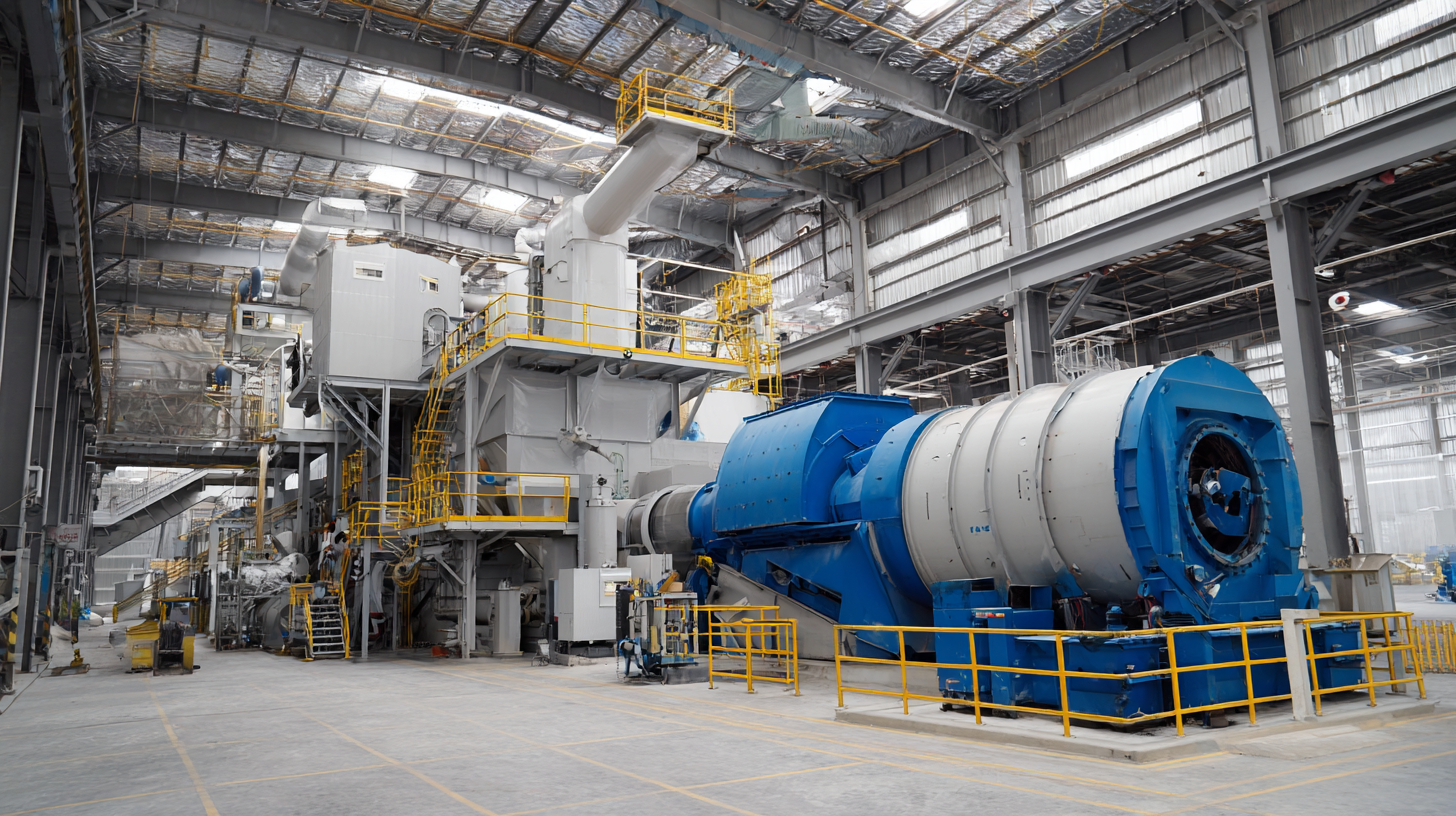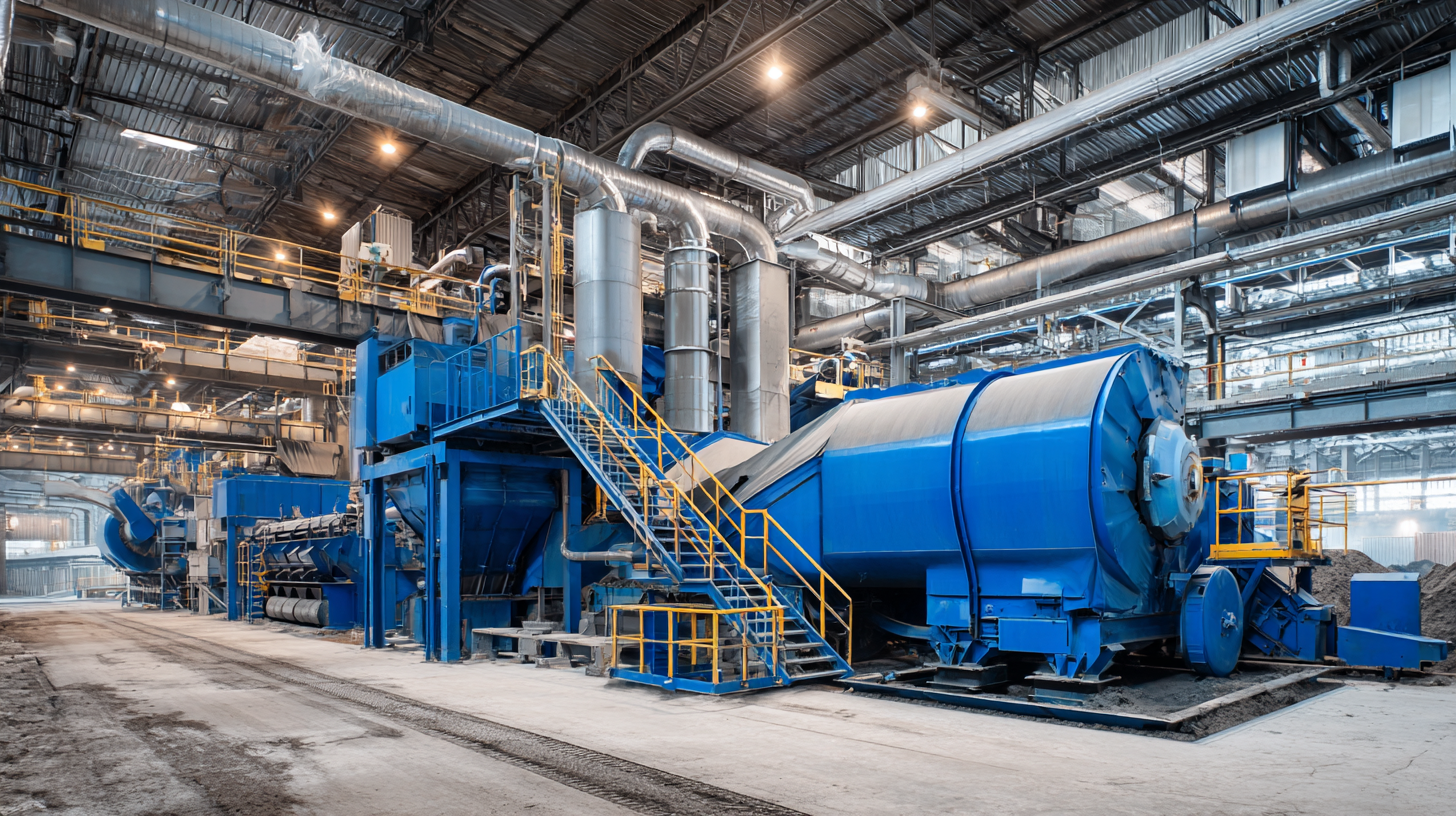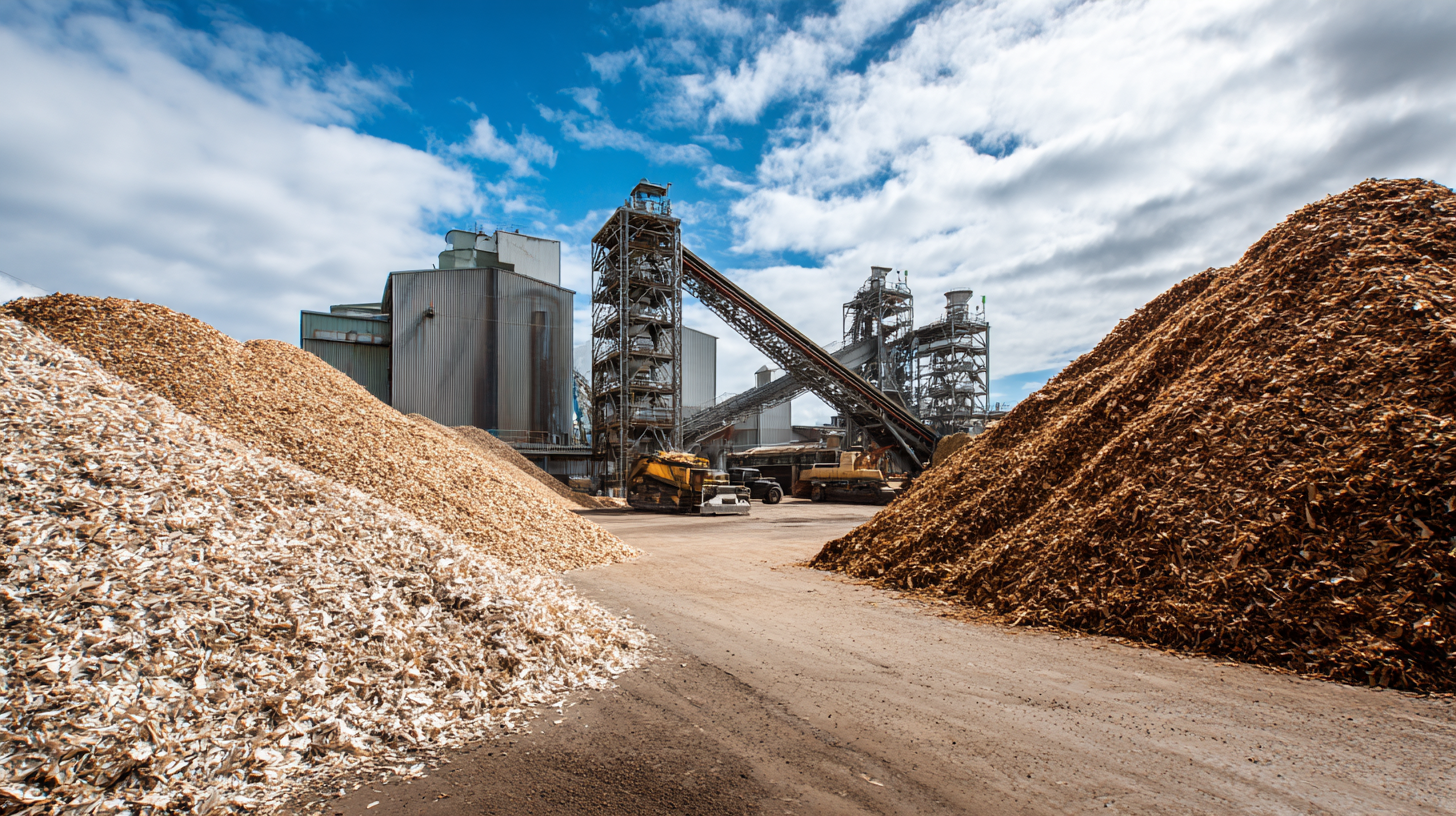You know, as waste management keeps evolving, the idea of Waste-To-Energy Sludge Drying is really starting to catch on as a pretty sustainable way to turn waste into energy and cut down on waste overall. I came across a report from the International Renewable Energy Agency that predicts the global waste-to-energy market could hit around USD 40 billion by 2027—pretty impressive, right? That’s mainly because more folks are focusing on eco-friendly tech solutions these days. As a company that’s been around the block, APEXX specializes in top-notch sludge drying and conveying equipment. We’ve seen a huge jump in demand for effective wastewater treatment options, and with our solid presence in China and a good reputation worldwide, our gear is known for being high-tech and reliable—customers really trust us. If organizations follow these seven simple tips, they can really make their Waste-To-Energy Sludge Drying process smoother and more efficient, which totally helps push us toward a greener future.

 Turning waste into energy through sludge drying is actually pretty important stuff. When we dry sludge efficiently, it shrinks a lot—making it way easier and cheaper to handle. Plus, it does a good job of saving space in landfills and even opens up options to generate energy, whether that’s through methods like anaerobic digestion or burning it. Getting a good handle on how sludge drying works is really key if we want to make these processes work better.
Turning waste into energy through sludge drying is actually pretty important stuff. When we dry sludge efficiently, it shrinks a lot—making it way easier and cheaper to handle. Plus, it does a good job of saving space in landfills and even opens up options to generate energy, whether that’s through methods like anaerobic digestion or burning it. Getting a good handle on how sludge drying works is really key if we want to make these processes work better.
There are a few main techniques used in waste-to-energy sludge drying—things like thermal drying, mechanical dewatering, and even solar drying. Each one has its perks and quirks, so figuring out which method fits best depends on the specific situation. Things like the type of sludge you’re dealing with, environmental factors, and available energy sources all come into play. When operators understand these details, they can better tailor their strategies—saving energy, boosting efficiency, and maximizing the valuable stuff they can recover from waste. It’s all about making smarter choices and getting the most out of what we throw away.
When it comes to Waste to Energy systems, one thing that really makes a difference is how effectively we dry out sludge. Getting that right is key to squeezing out more energy and cutting down on landfill waste. There are quite a few tech options out there, but a few stand out as particularly effective: rotary drum dryers, belt dryers, and thermal drying methods. According to a report from the International Solid Waste Association, using these advanced drying techniques can boost the energy we get from sludge by as much as 30%. That’s pretty impressive, right? It makes these options not just good for the environment but also kind to the wallet.

Now, rotary drum dryers are super popular because they can handle different types of sludge and varied feed rates with ease. They use direct heat, which helps strip out moisture more efficiently—good enough to get the moisture down to less than 10%. The EPA has found that using rotary dryers can really cut down the volume of sludge, which means costs for transportation and disposal tend to drop quite a bit.
On the flip side, belt dryers are great if you’re after continuous drying. They tend to use less energy overall and can even cut greenhouse gas emissions by around 40% compared to more traditional methods. With all these innovations happening, it’s clear that drying tech is set to change the game for Waste to Energy systems, making sludge drying smarter, greener, and more budget-friendly.
When it comes to sludge drying processes, really getting a handle on what drives energy use is key if we want to make things more efficient. Lately, there’ve been some exciting tech breakthroughs—like using artificial neural networks (ANNs)—that are changing the game. These smart models can basically analyze all sorts of physical and chemical properties to predict how well the sludge will dewater, helping us fine-tune the whole process. The best part? They cut down on wasted energy and boost overall performance.
On top of that, there's this cool heat pump drying tech that taps into sewage heat sources—pretty much turning waste heat into a resource. It’s a more eco-friendly way to dry sludge because it reduces pollution and saves energy at the same time. Plus, innovations like cyclone self-rotation drying (CSRD) are showing real promise by using less energy compared to the old-school methods. As these kinds of technologies keep advancing, they're paving the way for more sustainable, efficient sludge drying. Not only does this mean better resource use, but it also helps protect our environment—pretty awesome, right?
Getting the material handling and preparation just right is super important when it comes to making the sludge drying process work efficiently. One trick that really helps is using automated systems to move the sludge smoothly from where it’s collected out to the drying units. Not only does this cut down on mistakes that people might make, but it also makes the whole process quicker – you know, no waiting around. Plus, leveraging conveyors and fancy feeding systems can cut down on waste and boost overall efficiency.
Another thing that’s a total game changer is doing some solid screenings and pretreatments on the sludge before drying. Taking out bigger chunks and any weird stuff not only helps the drying go faster and use less energy, but it also makes the feedstock more uniform. That way, the final dried product turns out much more consistent.
Don’t forget, keeping all the equipment in top shape is a must. Regular upkeep avoids unexpected breakdowns and keeps everything running smoothly. And it’s super helpful to train staff to spot potential problems early — whether it's a clog or a bottleneck — so they can jump in and fix things before they turn into bigger issues. All of this together really helps in creating a more streamlined and effective sludge drying process.
| Tip Number | Tips | Description | Expected Outcome |
|---|---|---|---|
| 1 | Pre-Processing Screening | Screen sludge for large particles and contaminants before the drying process. | Improved efficiency in drying and reduced equipment wear. |
| 2 | Optimal Material Handling | Use conveyor systems that minimize transport times and energy use. | Lower operational costs and enhanced workflow. |
| 3 | Adjusting Sludge Thickness | Optimize the thickness of sludge for optimal drying. | Consistent drying rates and reduced drying times. |
| 4 | Monitoring Moisture Content | Regularly check moisture levels during drying to adjust parameters. | Enhanced final product quality and reduced energy consumption. |
| 5 | Use of Heat Exchangers | Implement heat exchangers to improve thermal efficiency. | Lower energy costs and improved drying performance. |
| 6 | Automation of Processes | Automate control systems for better precision and reduced labor. | Increased reliability and reduced human error. |
| 7 | Regular Maintenance | Establish a regular maintenance schedule for equipment. | Extended equipment lifespan and decreased downtime. |
Sludge drying is honestly one of those really key parts of turning waste into energy, but it definitely has its fair share of challenges. For starters, moisture content can be all over the place, which makes the drying process pretty inconsistent at times. To tackle this, it might be a good idea to set up some real-time monitoring systems. These can tweak the drying parameters on the fly based on how moist the sludge is, helping to keep things more uniform and efficient.
Another tricky bit is those pesky clumps that tend to form during drying—they block airflow and slow everything down. Regular maintenance and checks for blockages are your friends here, making sure everything stays clear and runs smoothly. Plus, adding some mechanical agitation during drying can really help break up those clumps, boosting the process even more.
And let’s not forget about energy use—because drying sludge can be pretty energy-intensive. Using energy-efficient tech, like fancy heat exchangers or even solar thermal systems, can cut down on the power needed. By adopting these kinds of innovations, plants aren’t just improving their drying game—they’re also doing their part for a greener, more sustainable waste-to-energy setup.
: The top technologies for efficient sludge drying in Waste to Energy systems include rotary drum dryers, belt dryers, and thermal drying technologies.
Advanced drying technologies can increase the energy yield from sludge by up to 30%.
Rotary drum dryers can handle varying sludge types and feed rates, achieve moisture content levels below 10%, and significantly reduce the volume of sludge, leading to lower transportation and disposal costs.
Belt dryers are suitable for continuous operations and have lower energy consumption, often reducing greenhouse gas emissions by 40% compared to traditional methods.
Key factors affecting energy consumption include moisture content, sludge composition, drying temperature, and airflow, which can be optimized using advanced technologies like artificial neural networks and heat pump drying.
Real-time monitoring systems can adjust drying parameters based on moisture levels, ensuring more uniform drying rates and addressing variations in moisture content.
To prevent clumping, facilities can implement regular maintenance of equipment, conduct checks for blockages, and incorporate mechanical agitation during the drying phase.
Heat pump drying technology utilizes sewage heat sources, reducing pollution and enhancing energy efficiency, making it an eco-friendly alternative in sludge management.
Utilizing energy-efficient technologies, such as advanced heat exchangers or solar thermal systems, can significantly reduce energy usage and improve the sustainability of waste-to-energy systems.
Hey there! So, in our latest blog titled "7 Essential Tips for Getting the Most Out of Waste-to-Energy Sludge Drying," we dive into the basics as well as some pretty advanced strategies that are key to making these sludge drying processes work better. If you’re curious about how it all works, you'll get a clear look at the top three technologies that really boost efficiency, along with five important factors that impact how much energy you use. We even go through four practical tips for handling and preparing sludge materials — stuff that’s super important if you want the whole process to run smoothly.
Plus, we don’t shy away from the common hurdles folks often face with sludge drying. We share some solid, real-world solutions to help you tackle those pesky challenges head-on. And since APEX Company has a lot of experience with top-notch sludge drying and conveying equipment, we’re in a great position to support companies looking to optimize their waste-to-energy setups. Our goal? Helping you hit high standards in both performance and reliability — because that’s what really matters.
Hope you find this info useful and a little more relatable than some of the tech-heavy stuff out there!

